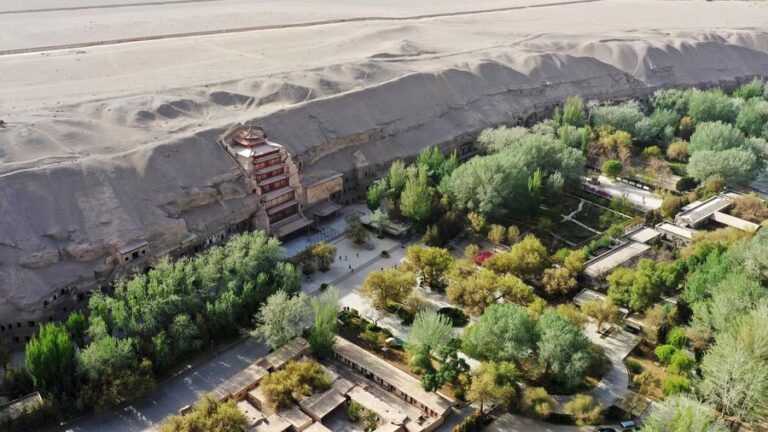LANZHOU, Sept. 21 (Xinhua) — More than 1,200 representatives from 97 countries and eight international organizations have gathered at the 8th Silk Road (Dunhuang) International Cultural Expo, which kicked off on Sunday in Dunhuang, a key hub on the ancient Silk Road in northwest China.
The expo will continue until Monday and features activities such as cultural dialogues and exhibitions, as well as artistic performances to promote global cultural cooperation.
Speaking at the expo, Prasop Riangngoen, permanent secretary of the Ministry of Culture of the Kingdom of Thailand, said Dunhuang is a symbol of the Silk Road — an important hub where civilizations converge, ideas are exchanged and different arts are able to learn from each other.
As the guest of honor at the expo in Gansu Province, Thailand is showcasing its cultural heritage and ethnic customs.
“The artistic elements in the murals of the Mogao Caves share many similarities with the temple murals in Thailand, which fully demonstrates the close historical connection between the two countries,” Riangngoen said.
The Mogao Caves, which represent extraordinary cultural heritage, were inscribed on the UNESCO World Heritage List in 1987. Murals inside these caves in northwest China bear witness to profound dialogues in the fields of religion, art and thought along the Silk Road, which have left deep imprints on this ancient route, Qu Xing, deputy director-general of UNESCO, said at the expo.
Dunhuang, which over 2,000 years ago witnessed the movement of Chinese silk and tea to the West and the arrival in China of once alien produce such as grapes, carrots and pomegranates, is today still a gateway which now serves China’s Belt and Road Initiative (BRI) — attracting visitors and scholars keen to delve into the historical significance and cultural inclusiveness of the artificial marvel that is the Mogao Grottoes.
This expo was first held in 2016, and the 2025 edition boasts an exhibition area of approximately 24,000 square meters, spotlighting the latest achievements in Dunhuang studies, as well as cultural arts, intangible cultural heritage and creative products.
Belt and Road countries participating at the expo are showcasing their tourist attractions, customs and traditions — and their achievements in terms of intangible cultural heritage protection. ■

